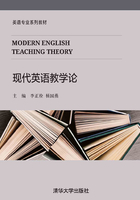
Whole Language Education
The term “whole language” was created in the 1980s by a group of U.S. educators concerned with the teaching of language arts, that is, reading and writing in the native language. The teaching of reading and writing in the first language (often termed the teaching of literacy) is a very active educational enterprise worldwide, and, like the field of second language teaching, has led to a number of different and sometimes competing approaches and methodologies. One widespread approach to both the teaching and writing has focused on a “decoding” approach to language. This is meant a focus on teaching the separate components of language such as grammar, vocabulary, and word recognition, and in particular the teaching of phonics. The whole language movement is strongly opposed to these approaches to teaching reading and writing and argues that language should be taught as a “whole”. “If language isn’t kept whole, it isn’t language anymore” (Rigg, 1991: 522). Whole language instruction is a theory of language instruction that was developed to help young children learn to read, and has also been extended to middle and secondary levels and to the teaching of ESL. “What began as a holistic way to teach reading has become a movement for change, key aspects of which are respect for each student as a member of a culture and as a creator of knowledge, and respect for each teacher as a professional” (Rigg, 1991: 521).
The Whole Language Approach emphasizes learning to read and write naturally with a focus on real communication and reading and writing for pleasure. In the 1990s it became popular in the United States as a motivating and innovative way of teaching language arts skills to primary school children. In language teaching it shares a philosophical and instructional perspective with Communicative LanguageTeaching since it emphasizes the importance of meaning and meaning making in teaching and learning. It also relates to natural approaches to language learning since it is designed to help children and adults learn a second language in the same way that children learn their first language (Richards & Rodgers, 2001).
Nowadays, whole language is one of the most popular terms currently sweeping through the language teaching profession. It has been so widely and divergently interpreted that it unfortunately is on the verge of losing the impact that it once had. Initially the term came from reading research and was used to emphasize: (1) the “wholeness” of language as opposed to views that fragmented language into its bits and pieces of phonemes, graphemes, morphemes, and works; (2) the interaction and interconnections between oral language (listening and speaking) and written language (reading and writing); and (3) the importance, in literate societies, of the written code as natural and developmental, just as the oral code is.
Now the term has come to encompass a great deal more. Whole language is a label that has been used to describe:
• Cooperative Learning;
• Participatory learning;
• Student-centered learning;
• Focus on the community of learners;
• Focus on the social nature of language;
• Use of authentic, natural language;
• Meaning-centered language;
• Holistic assessment techniques in testing;
• Integration of the “four skills”.
With all these interpretations, the concept of whole language has become considerably watered down. Edelsky (1993: 550-551) noted that whole language is not a recipe and it’s not an activity that you schedule into your lesson; “it is an educational way of life. It helps people to build meaningful connections between everyday learning and school learning”.
It is appropriate, then, that we use the term carefully so that it does not become just another buzz word for teachers and materials developers. Two interconnected concepts are brought together in whole language:
1. The wholeness of language implies that language is not the sum of its many dissectible and discrete parts. First, language acquisition research shows us that children begin perceiving “wholes” (sentences, emotions, intonation patterns) well before “parts”. Second, language teachers therefore do well to help their students attend to such wholes and not to yield to the temptation to build language only from the bottom up. And since part of the wholeness of language includes the interrelationship of the four skills (listening, speaking, reading, and writing), we are compelled to attend conscientiously to the integration of two or more of these skills in our classrooms.
2. Whole language is a perspective “anchored in a vision of an equitable, democratic, diverse society” (Edelsky, 1993: 548). Because we use language to construct meaning and to construct reality, teaching a language enables learners to understand a system of social practices that both constrain and liberate. Part of our job as teachers is to empower our learners to liberate themselves from whatever social, political, or economic forces constrain them.
(Brown, 2001: 48-49)